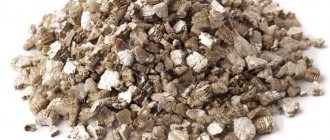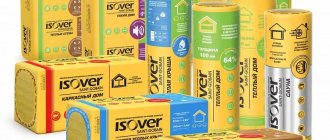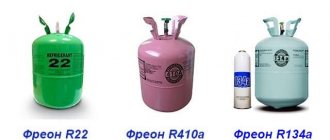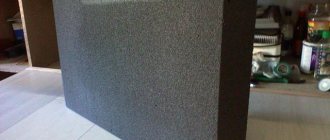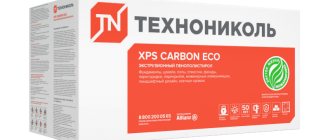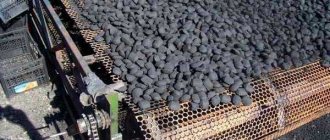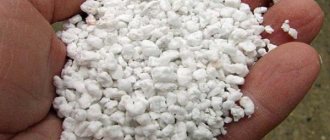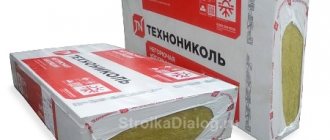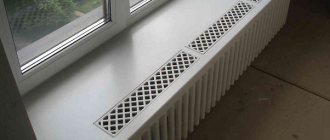Origin story
In 1989, the Montreal Protocol on Substances that Deplete the Ozone Layer was signed. It included refrigerants such as R22 and R13B, as ozone depleting ones (due to the presence of chlorine in their composition). To replace them, a new freon R-410A was developed.
Initially, it was used to replace obsolete refrigerants (if the characteristics of the systems allowed). Subsequently, equipment was developed that could operate with r410a refrigerant, but not with r22 or r13b. It was compact and low power consumption.
Due to this, new models began to be popular, although they were somewhat more expensive. When refrigerant manufacturers reduced the cost of a new type of freon, manufacturers of household and commercial refrigeration and air conditioning equipment switched to it. Now the refrigerant in some areas is used more often than its analogues, such as r134a, r404a, r600a, r407c and r507.
After the development of the refrigerant, many manufacturers began to patent their own brands. Now full-fledged analogues of R410a are:
- SUVA 9100;
- AZ 20;
- Forane 410a;
- Solkane 410.
Brand Genetron AZ 20 - a complete analogue of R410a
Evacuation of the air conditioner
Not everyone takes this into account, but an equally important procedure, in addition to the norms for refilling freon and the amount of oil in the system, is also evacuation of the air conditioner!
When less than 50% of the refrigerant remains in the car air conditioning system, air and moisture getting inside is inevitable. Naturally, the unit will be able to work, although not to its full potential, but, most likely, the compressor will fail, and corrosion will form on the system tubes, and then repairs will cost much more than evacuation. To remove atmospheric air and moisture vapor from the air conditioner, you will need a vacuum pump.
- Turn on the heater and warm up the car so that moisture condenses in the evaporator;
- Connect the vacuum pump to the compressor fitting, and then, unscrewing the nipple, turn the tap under it (counterclockwise);
- Turn on the pump for 15 minutes, then close the valves and turn it off. Repeat the procedure several times. After completing the procedure, you need to wait 2-3 hours, and only then can you refuel the car’s air conditioner.
Application area
According to the Significant New Alternatives Policy (SNAP) Program, 410a refrigerant can be used in:
- Home and commercial light refrigeration units;
- Industrial refrigeration processes;
- Home and commercial air conditioning;
- Industrial air conditioning;
- Cold storage systems;
- Ice skating systems;
- Refrigerating machines;
- Vending food refrigerated machines;
- Refrigerated transportation.
Most medium and low temperature refrigeration equipment uses r410a freon. Its technical characteristics make it possible to significantly reduce installations.
Freon R410A is often used in:
- Refrigerators;
- Air conditioners;
- Freezers;
- Refrigerating and freezing chests;
- Heat pumps.
Scope of application of R404A refrigerant
Freon R404A began to be actively used in 1994 and was charged only to powerful refrigeration equipment designed for low- and medium-temperature evaporation. Subsequently, the refrigerant began to be used to modernize refrigeration plants designed to charge the R502 composition. Thanks to its high-quality technical characteristics, R404A refrigerant has a wide range of applications and is in demand:
- for filling and circulation in industrial refrigeration devices;
- in cooling circuits of low- and medium-temperature chambers used for food storage;
- as a working refrigerant in many refrigeration units used in trade, at wholesale warehouses, automobile refrigerators, store windows, etc.
- for refueling low-temperature equipment used for commercial purposes;
- for medium temperature refrigeration devices and industrial refrigerators.
Being a worthy alternative to R502, R404A freon is widely used to operate powerful industrial refrigeration equipment installed in retail establishments for long-term storage of products. Freon is also filled into containers equipped with a system for producing cold and intended for transporting frozen products (semi-finished products) by sea.
Differences between R22 and R410a
Compared to freon r22, refrigerant r410a has a number of advantages and disadvantages. They are due to its technical characteristics, physical properties and complexity of production.
Freon r22:
- Has low cost;
- Should be phased out by countries that have ratified the Montreal Protocol by 2021;
- It is single-component; in case of a leak, refilling is possible regardless of the amount of refrigerant lost;
- It is not difficult to produce, thanks to which there are many manufacturers around the world.
Freon r410a:
- More expensive than R-22 refrigerant;
- Non-toxic, fireproof;
- Two-component, if a large amount leaks from the system, it must be cleaned of residues and refilled;
- Does not destroy the ozone layer;
- Has higher operating pressures, equipment must be more durable. It is expensive, but reliable.
It is worth mentioning separately about the effect on the wig effect. The global warming potential of r410a refrigerant is 32.3% greater than that of r22. But if all equipment switches completely to it, an interesting effect will result.
Since the cooling performance of r410a freon is better, less of it is needed. It was calculated that when the system was transferred from 22nd refrigerant to 410th, its impact on the greenhouse effect decreased by an average of 11-13%. From an environmental point of view, R22 loses.
In terms of energy efficiency, 410a refrigerant is better than 22a. A study published in the International Journal of Engineering Research & Technology showed that the difference is about 5-10% (see figure).
Results of a study on the energy efficiency of refrigerants r410a, r22 and r404a
Advantages and disadvantages of freon R 410a
The refrigerant belongs to the group of hydrofluorocarbons. The promising composition is considered an ozone-safe HFC mixture. The minimum temperature glide (0.15 K) equates its properties to single-component refrigerants.
- The high level of specific cooling capacity does not require the installation of a powerful compressor.
- In the event of a leak, the gas quantity is easily replenished without loss of refrigerant quality.
- Ample opportunities arise in terms of reducing equipment energy consumption.
- Cooling performance is 50% higher than R22 and 407c systems.
- Good thermal conductivity and low viscosity have a positive effect on the efficiency of the system. Heat is transferred faster and with less cost to move.
Disadvantages of refrigerant:
- High operating pressure in the system, which negatively affects the compressor, leads to rapid wear of the bearings.
- The pressure difference between the suction and discharge sides of the refrigerant reduces the compressor efficiency.
- The requirements for circuit tightness are increasing. The wall thickness of the main copper pipes must be greater than for R22. Minimum value 0.8 mm. A significant amount of copper increases the cost of the system.
- The refrigerant is not compatible with HVAC components made from elastomers sensitive to diphthomethane and pentafluoroethane.
- Polyester oil used in conditioner is more expensive than mineral oil.
Features of 410 refrigerant
Freon R410a is not an azeotropic gas. It is a mixture of two refrigerants in the following proportions:
- R125, C2F5H (pentafluoroethane) – 50%;
- R32, СF2H2 (difluoromethane) – 50%.
An azeotropic mixture is a mixture of two or more liquids, the composition of which does not change when boiling, that is, a mixture with equal compositions of the equilibrium liquid and vapor phases.
Wikipedia
But the properties of the refrigerant are very close to an azeotropic mixture. Therefore, if it leaks, it is not always necessary to completely change the freon. Depending on the system, if leaks reach 20-60%, the equipment can be refueled.
Compared to R22, R410A refrigerant has 50% greater cooling capacity. For full operation of the system, 33% less of it is needed. at the same time its operating pressure is higher. the difference between the vapor pressure of R22 and R410a depends on the temperature.
At high temperatures (more than 25 °C) it can be 60% or more. Due to this, the system must have stronger walls of the evaporator and condenser tubes. This is achieved either by a larger diameter or greater wall thickness. Due to the larger amount of copper used, the equipment is more expensive.
Unlike R22, R410a refrigerant does not completely dissolve in mineral oils. The equipment is filled with polyester synthetic refrigeration oils, such as:
- Bitzer BSE;
- Suniso SL;
- Mobil EAL Arctic;
- Planetelf.
Mobil EAL Arctic 68 synthetic refrigeration oil
How much does it cost to refill a car air conditioner?
If there is not enough freon in the system and the air conditioner does not cool the interior well, then there are 2 options: refill it yourself or contact a service station. If you go to a car service center, they charge an average of 1,500 rubles for a full refill of a car air conditioner. Some drivers do not fully charge the system, but simply add freon. This costs on average 300 rubles per 100 grams. Specialists measure how much freon is missing in the system and add it until the required pressure is reached. That is, if the system does not have enough freon 150 grams, then refilling will cost only 450 rubles. At some service stations the prices are lower, at others – higher. However, everyone decides for themselves where to refill the car air conditioner. But this can be done at many service stations.
| Type of work | Cost, Russian rubles |
| Charging the system with refrigerant (evacuation, evacuation, leak test, refilling) | 1500 rub. (excluding refrigerant cost) |
| Refilling the car air conditioner | 900 rub. (excluding refrigerant cost) |
| Refrigerant R-134a | 250 rub. per 100 grams |
| Adding oil to the system | 500 rub. (including oil) |
| UV dye for oil (tracer) | 250 rub. |
| Diagnostics using a leak detector or ultraviolet | 800 rub. |
Technical characteristics of freon R410a
| Characteristic | Meaning |
| Molecular weight (g/mol) | 72.58 |
| Boiling point at atm. pressure (°C) | -51.58 |
| Mass fraction of R125 | 0.5 |
| Mass fraction of R32 | 0.5 |
| Liquid density at 25 °C, (kg/m3) | 1062 |
| Saturated vapor density at 25 °C, (kg/m3) | 18.5 |
| Critical temperature (°C) | 72.1 |
| Critical pressure, kPa (abs.) | 5166 |
| Critical density of liquid, kg/m3 | 488.9 |
| Steam pressure at 25 °C, kPa (abs.) | 173.5 |
| Heat of vaporization at normal boiling point, kJ/kg | 264.3 |
| Flammability limit in air (0.1 MPa), vol.% | No |
| ODP (ozone depletion potential) | 0 |
| HGWP (Global Warming Potential) | 0.45 |
| GWP (100-year global warming potential) | 1890 |
| MAC (maximum permissible inhalation concentration), ppm | 1000 |
| Net weight in standard metal cylinder (kg) | 11.3 |
| Saturated vapor density at boiling point, kg/m3 | 4 |
| Latent heat of vaporization at boiling point BTU/pound | 116.7 |
| Specific heat capacity of liquid at 25°C BTU/pound °F | 0.44 |
| Specific heat capacity of vapor at 1 atm. BTU/pound °F | 0.17 |
How to recharge your air conditioner yourself
Air conditioning systems have two sides: low pressure (indicated by the red arrow) and high pressure (indicated by the blue arrow).
The car air conditioner is refilled into the low pressure line, so the first thing you need to do is find the right fitting. To avoid charging from the high pressure side, the inlet sizes are different. On some models, the fitting caps are designated by the letters “H” and “L” or have different colors.
When unscrewing the low-pressure line tap, carefully wipe the cap itself and the section of the tube with a rag to prevent dust or debris from getting inside.
Regardless of the car model and the appearance of the components, the general instructions for refilling the car air conditioner will be similar.
So, to fill freon into the car air conditioning system, do the following:
- We clean the protective cap and the section of the low pressure line from dirt, then open it.
- We put a hose from the previously assembled equipment onto the filling fitting.
- The instructions for refilling car air conditioners provide for starting the engine and maintaining 1500 rpm. They need to be held so that the compressor pumps freon through the lines. Therefore, at this stage you either need help or you can put something under the gas pedal.
- Turn on air recirculation throughout the cabin to maximum.
- Open the low pressure line tap by turning the refrigerant cylinder upside down and slowly open the valve. The air conditioner starts charging (with the engine running).
- Refilling the car air conditioner is accompanied by constant monitoring of the pressure gauge readings.
- The pressure in the low pressure line should not exceed 285 kPa and ideally should be 10 units less. Exceeding the maximum permissible pressure can lead to compressor failure.
- To understand whether the system is being charged correctly, you can look into the window of the filter-drier - if there are no bubbles there and clear liquid is visible, then you are doing everything correctly.
- As soon as cool air enters the cabin (about 5-8° C°), and the hose near the low pressure fitting is cold as ice, the procedure for refilling the car’s air conditioner can be completed.
Characteristics of R410a freon on the saturation line
Saturated liquid
| Temperature | Pressure | Density | Enthalpy | Entropy |
| °C | saturation, MPa | kg/m3 | kJ/kg | kJ/(kg*K) |
| -50 | 1.123 | 1339.761 | 131.4 | 0.726 |
| -45 | 1.417 | 1325.036 | 137.8 | 0.754 |
| -40 | 1.77 | 1309.941 | 144.2 | 0.782 |
| -35 | 2.191 | 1294.45 | 150.7 | 0.809 |
| -30 | 2.689 | 1278.534 | 157.3 | 0.837 |
| -25 | 3.273 | 1262.162 | 164 | 0.864 |
| -20 | 3.954 | 1245.297 | 170.9 | 0.891 |
| -15 | 4.743 | 1227.897 | 177.9 | 0.918 |
| -10 | 5.651 | 1209.914 | 185.1 | 0.945 |
| -5 | 6.69 | 1191.292 | 192.5 | 0.973 |
| 0 | 7.872 | 1171.968 | 200 | 1 |
| 5 | 9.211 | 1151.863 | 207.7 | 1.028 |
| 10 | 10.719 | 1130.887 | 215.7 | 1.055 |
| 15 | 12.41 | 1108.928 | 223.9 | 1.084 |
| 20 | 14.299 | 1085.849 | 232.5 | 1.112 |
| 25 | 16.399 | 1061.481 | 241.3 | 1.141 |
| 30 | 18.725 | 1035.603 | 250.5 | 1.171 |
| 35 | 21.293 | 1007.926 | 260.2 | 1.202 |
| 40 | 24.116 | 978.057 | 270.4 | 1.233 |
| 45 | 27.211 | 945.435 | 281.2 | 1.266 |
| 50 | 30.592 | 909.218 | 292.8 | 1.301 |
Saturated steam
| Temperature | Pressure | Density | Enthalpy | Entropy | Heat |
| °C | saturation, MPa | kg/m3 | kJ/kg | kJ/(kg*K) | vaporization, kJ/kg |
| -50 | 1.122 | 4.526 | 401.5 | 1.936 | 270.1 |
| -45 | 1.415 | 5.616 | 404.6 | 1.924 | 266.8 |
| -40 | 1.767 | 6.909 | 407.5 | 1.913 | 263.4 |
| -35 | 2.187 | 8.435 | 410.5 | 1.902 | 259.8 |
| -30 | 2.683 | 10.224 | 413.3 | 1.891 | 256 |
| -25 | 3.265 | 12.312 | 416.1 | 1.882 | 252 |
| -20 | 3.944 | 14.738 | 418.8 | 1.872 | 247.8 |
| -15 | 4.73 | 17.546 | 421.3 | 1.863 | 243.4 |
| -10 | 5.635 | 20.785 | 423.8 | 1.854 | 238.7 |
| -5 | 6.67 | 24.511 | 426.1 | 1.846 | 233.6 |
| 0 | 7.849 | 28.79 | 428.3 | 1.837 | 228.3 |
| 5 | 9.184 | 33.696 | 430.2 | 1.829 | 222.5 |
| 10 | 10.688 | 39.317 | 432 | 1.821 | 216.3 |
| 15 | 12.375 | 45.759 | 433.6 | 1.812 | 209.6 |
| 20 | 14.26 | 53.149 | 434.8 | 1.803 | 202.4 |
| 25 | 16.357 | 61.643 | 435.8 | 1.794 | 194.5 |
| 30 | 18.681 | 71.44 | 436.4 | 1.785 | 185.9 |
| 35 | 21.247 | 82.798 | 436.6 | 1.774 | 176.4 |
| 40 | 24.07 | 96.062 | 436.2 | 1.763 | 165.9 |
| 45 | 27.165 | 111.722 | 435.2 | 1.75 | 154 |
| 50 | 30.549 | 130.504 | 433.4 | 1.736 | 140.6 |
Freon boiling point 410
| Temperature, ° C | Pressure | Temperature, ° C | Pressure |
| +50 | 29.5 | -10 | 4.72 |
| +45 | 26.2 | -15 | 3.85 |
| +40 | 22.9 | -20 | 2.98 |
| +35 | 19.78 | -25 | 2.35 |
| +30 | 16.65 | -30 | 1.71 |
| +25 | 15 | -35 | 1.22 |
| +20 | 13.35 | -40 | 0.73 |
| +15 | 11.56 | -45 | 0.25 |
| +10 | 9.76 | -50 | 0.08 |
| +5 | 8.37 | -55 | -0.22 |
| 0 | 6.98 | -60 | -0.36 |
| -5 | 5.85 | -65 | -0.51 |
How to check the remaining freon
You can determine the lack or excess of refrigerant in the split system circuit by the amount of overheating of the gas coming from the evaporator to the compressor. Let's explain this concept:
- the refrigerant evaporated in the internal heat exchanger moves through the low pressure pipe into the compressor;
- on the way, the steam has time to additionally heat up by 5-8 ° C (if the amount of freon corresponds to the norm);
- The difference between the boiling point of the liquid and the actual gas temperature at the compressor suction pipe is called superheat.
Location of the split system service ports and connection of the pressure gauge station
Key moment. To find out the boiling point of a certain brand of freon in real conditions, you just need to measure the pressure on the suction side.
To work, you will need a pressure gauge station with connecting hoses and a contact thermometer (an electronic pyrometer will also work). We diagnose freon residue according to the following instructions:
- Find out the type of refrigerant used in the air conditioner by looking at the nameplate attached to the external module.
- Connect the blue hose leading to the low pressure gauge (abbreviated as LP), located on the left of the manifold, to the service port of the gas line, as done above in the photo. It has a large diameter.
- Turn on the split system for cooling with the fan operating at maximum speed. Open the left tap of the pressure gauge station.
- Take readings only after the compressor has started. The sound of the operating unit can be clearly heard from the external unit.
- Find out the boiling point of your brand of freon at the measured pressure, using the table as a guide.
- Using a thermometer, measure the actual heating of the gas tube on the suction side. Calculate the difference between this temperature and the boiling point table.
- Proceed to analyze the result.
Using a thermometer, the heating of the large diameter gas pipe coming from the indoor unit to the compressor is determined
Advice. It is not necessary to use the freon table. The manifold pressure gauges also have additional scales that immediately show the boiling point of the freon at the measured pressure. The main thing is to initially select the correct station, where markings are applied for refrigerants R22, R410a and R134a.
Marking of the pressure gauge scale for various types of refrigerants
Let's look at the example shown in the photo. The arrow shows 5.4 Bar, which corresponds to the boiling point of freon R22 +8 °C. We measure the temperature of the suction pipe and get, for example, +14 degrees, the amount of overheating will be 14 - 8 = 6 degrees. The permissible range for all types of air conditioners, including automobiles, is 5-8 ° C, which means that the amount of freon is normal.
The measurement process is clearly shown in the following video:
Signs of Low Refrigerant
If, as a result of measurements, you get steam overheating of more than 8 degrees, there is a lack of freon in the circuit. What happens in the air conditioner:
- The liquid boils in the first section of the evaporator and turns into a gaseous state. The steam, having passed through the heat exchanger tubes and the section of the line to the compressor, manages to heat up very much.
- Constantly sucking in hot gas, the compressor unit is poorly cooled and begins to overheat, reducing the service life of the mechanism.
- Cold performance is noticeably reduced. On average, 1 kg of refrigerant is capable of absorbing and transferring 50 W of heat - the lower the freon consumption in the circuit elements, the weaker the air is cooled.
When a refrigerant leaks, traces of oil appear at the joints, not noticeable at first glance.
Note. Low refrigerant problems are typically caused by leaks in the roller joints of the copper piping. The main symptom is traces of oil on the nuts, escaping along with the working fluid.
A lack of refrigerant is accompanied by other side symptoms:
- at the command of the sensors, the split system often turns off and displays an error;
- the compressor operates for a long time at maximum mode;
- the tubes and service ports become covered with frost; in advanced cases, a snow “coat” grows on the evaporator fins.
Identical symptoms appear on car air conditioners, since they operate on a similar principle.
Oversupply and other problems
Was the overheating value less than 5 degrees? This means that there is too much fluid circulating in the system. Some of the substance does not have time to evaporate in the heat exchanger of the indoor unit; individual drops may fall into the compressor, and this can lead to major damage.
Recommendation. Recharging is relatively rare - as a rule, after servicing the air conditioner by illiterate personnel. Having discovered a problem, you should call a normal service technician who will drain the excess refrigerant or identify another problem.
If you are confident in your abilities, try to remove some of the freon yourself. Using the pressure gauge on the manifold or the table, determine what pressure should be in the air conditioner at normal superheat of +7 °C and carefully bleed off a small portion of the gas.
Abnormally high or low superheat occurs not only due to the refrigerant, but also to various faults:
- the capillary tube of the throttle valve is clogged;
- Compressor or dryer problems;
- The four-way solenoid valve that reverses the cycle (cooling/heating modes) is faulty.
It is better to entrust the diagnosis and troubleshooting of a car air conditioner to a service station technician.
These problems can be solved in one way - by calling a technician; an ignorant user simply will not be able to diagnose them. If manipulations with the freon do not produce results, call customer service.
Rules for vacuuming for refilling freon R410a
It is best to use a two-stage vacuum pump with a check valve. Before refueling, it is necessary to remove any remaining moisture.
To remove drops of water from the walls of the system, you need to evaporate it. To do this, it is necessary to reduce the pressure in the system below the boiling point. The pressure at which water boils depends on temperature as follows:
| Temperature, °C | Pressure, Pa |
| 5 | 900 |
| 10 | 1200 |
| 15 | 1700 |
| 20 | 2300 |
| 25 | 4200 |
When the pressure drops below the specified value, continue to evacuate the circuit for 10-15 minutes. After this, you need to leave the system under vacuum for one hour.
Two stage vacuum pump
We hope the article was useful to you. You can leave your questions, opinions and feedback in the comments. Don't forget to share the post with your friends!
Loading…
Why do leaks appear?
Many owners of climate control equipment are interested in: “how to check for a freon leak in an air conditioner and why this happens.” The main cause of refrigerant leakage is improper installation of the freon line. The thing is that all connections in the pipeline are made by rolling. If many installers lack sufficient experience or the rolling technology is violated, leaks appear in the joints from which leakage occurs, which is almost impossible to immediately notice.
A gas shortage can only be determined after several months, the first sign of which is a decrease in the performance of climate control equipment. If, after turning on the air conditioner, cool air does not flow into the apartment for 5-7 minutes from the indoor unit, this is a sign of insufficient gas in the system. You should immediately turn off the device and invite a specialist to diagnose and refuel the device.
The amount of refrigerant in the system also decreases due to natural evaporation during the operation of climate control equipment. Freon mass loss of up to 8% per year is considered normal.
